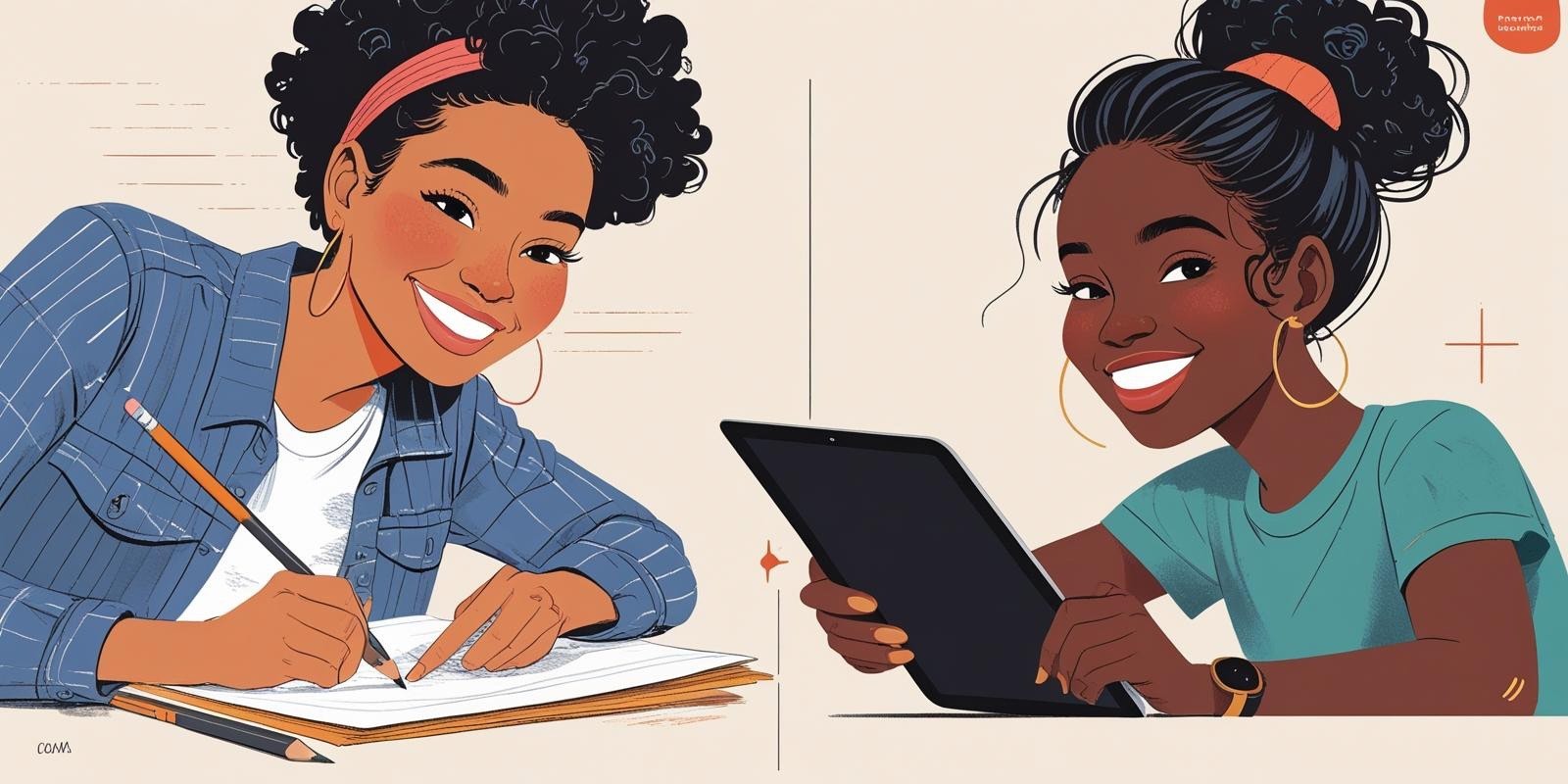Todd sits at his desk facing two honest options. On one side are paper, pencils, and a light table. On the other is a tablet with a bright timeline and layers ready to go. He wants to start animating today, but the first decision feels heavier than it should: Should I learn traditional first or jump into digital? The divide between “team pencil” and “team stylus” is real, but both paths can grow the same core skills if you pick the one that keeps you practicing.

In this post, you’ll see what traditional animation teaches, how digital speeds up practice, which path might fit your starting point best, and why switching later is not only possible but common. The key is to see both options as valid doors into the same craft, and to focus on the choice that will keep you practicing consistently.
What Is Traditional Animation?
To start, let’s look at the older but still powerful path that shaped the foundations of animation. Traditional animation is the hands-on process of drawing every frame by hand on paper or acetate. Think early Disney features, Studio Ghibli’s line work, or the classic Saturday-morning look before digital production became standard. You draw, photograph or scan, then play the frames in sequence.
Because every frame is drawn directly, traditional animation offers unique advantages and challenges worth weighing.
- Pros. It trains fundamentals fast, sharpens observation, and anchors you in the craft’s roots.
- Cons. It is slower, it uses physical materials, and mistakes cannot be undone with a click.
For Todd, the draw of traditional is that it slows him down enough to notice his mistakes. At his desk, he imagines working through stacks of roughs, knowing it will take longer but also that his hand and eye will sharpen faster. The tradeoff feels heavy, but the depth appeals to him. Traditional study is like lifting with strict form: progress feels earned, and he wonders if this is the right kind of discipline for his start.
What Is Digital Animation?
Now let’s move to the option that dominates today’s studios and classrooms. Digital animation uses software to sketch, time, color, and refine your work on screen. With tools like FlipaClip, Krita, or Blender, you can work fast, iterate freely, and keep all versions without piles of paper.
Digital animation comes with its own mix of benefits and limitations to consider.
- Pros. Rapid iteration, layers, non-destructive edits, effects, and many free or affordable options.
- Cons. Interfaces take time to learn, speed can mask weak fundamentals, and shortcuts can become crutches.
For Todd, the appeal of digital is obvious. He can undo mistakes instantly and test timing in minutes, which feels motivating after years of watching others create online. At the same time, he knows the shortcuts might let him skip over skills he needs. It’s like streaming a library of songs—fast access, endless choice—but he wonders if speed will keep him consistent or let him hide behind tools.
Which One Should You Try First?
At this point, the question becomes less about theory and more about what fits your daily habits. Choose the path that keeps you practicing this week, not the one that sounds perfect in theory.

Use these questions to make a practical call.
- Do you enjoy paper? If yes, traditional will feel rewarding and tactile, especially for line confidence.
- Do quick wins motivate you? If yes, digital’s undo, layers, and speed can keep you coming back tomorrow.
- What do you already own? If you have a tablet or touchscreen, start digital. If you have a sketchpad, start traditional and scan when ready.
Todd weighs these questions himself. With a sketchpad already at his side, traditional feels natural, but he also borrowed a tablet from a friend and wonders if the speed will help him keep momentum. In the end, he knows the real question is: which one will get him drawing again tomorrow?
Can You Switch Later?
Finally, remember that this first choice isn’t permanent. Yes—many animators blend both paths as their skills and projects evolve. Some storyboard traditionally to sharpen drawing, then finish digitally for timing and polish. Others start digital for speed and later study traditional to deepen fundamentals. Principles travel with you; tools are replaceable.
For Todd, this reminder lifts the pressure. He imagines starting digital for momentum, then shifting into traditional drills once his confidence grows. Knowing he can switch later frees him to start now instead of overthinking.
Final Thoughts
At the end of the day, what matters is not the team you choose but whether you show up tomorrow. Start where you will show up tomorrow, and let consistency make the debate irrelevant. In this post, we’ve explored what traditional animation offers, what digital brings to the table, how to decide which one fits your starting point, and why it’s easy to switch later as your skills grow.
For Todd—and for you—the decision is less about teams and more about traction. If traditional feels like a ritual that grounds you, use it. If digital unlocks momentum, lean in. What matters is the habit of animating, not the medium that carried the shot.




























